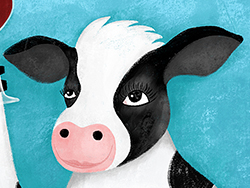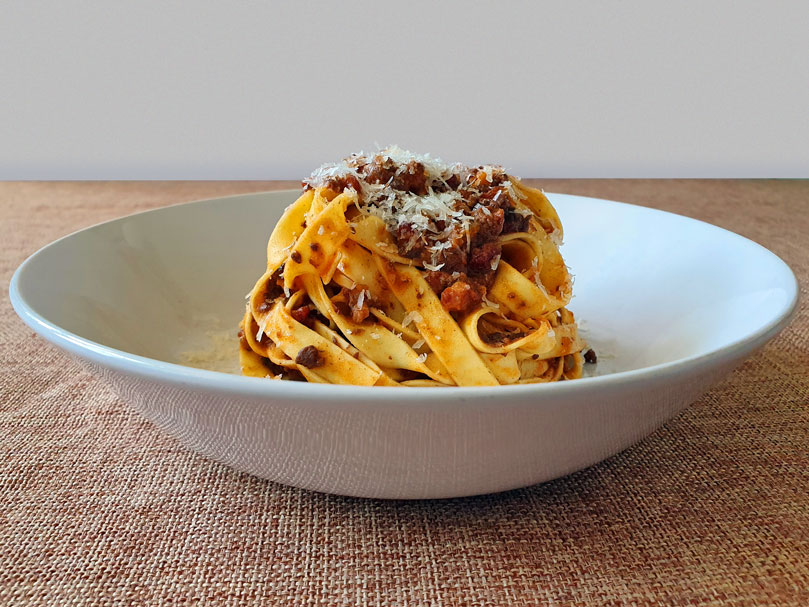
Virginio Merola, mayor of Bologna, got his tagliatelle in a twist when he saw this sign.
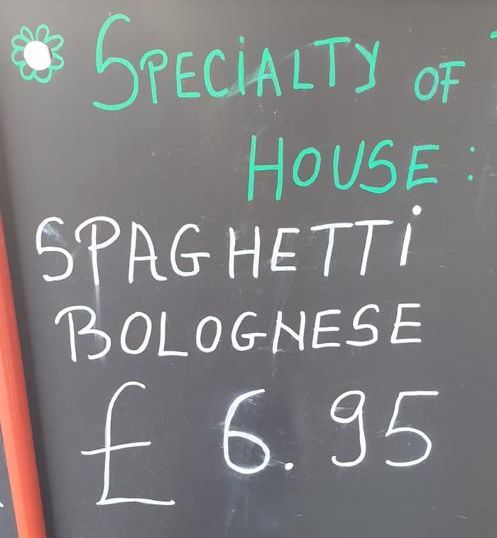
"..fake news.."
He declared.
His comment about this house speciality had nothing to do with its levels of added sugar, nor its liberal use of citric acid. He hadn’t even tasted what was on offer, let alone set foot in the establishment.
The reason for Virginio’s chagrin was the choice of pasta.
Spaghetti alla Bolognese??
Che palle!
As inoffensive as it may appear to us, this really hit a nerve for poor Virgo.
As it turns out, the Dolmio generation has been lied to all this time. Bologna has become famous for a dish it did not even invent.
Spaghetti should never be served with Bolognese sauce.
Conventional wisdom suggests the English speaking world’s exposure to spag bol came from US and UK soldiers returning from World War II. Dried spaghetti is common in the kitchens of southern Italy, and with the allied invasions of Sicily, Calabria and Apulia, there appears to be a clear link between Italy and the West that could explain how we ended up getting this classic wrong. The full history is richer than the sugo of a well made bolognese, and we will re-examine this at the appropriate time.
But I apologise, we’re getting ahead of ourselves. Forget the pasta for now. We need to purge the memory of Dolmio from our minds and will go searching for the closest thing to an “official” version of the bolognese sauce.
The global spread of the bolognese recipe was akin to a giant game of Chinese whispers. As post war years turned into decades, the range of ingredients proposed for the perfect sauce would struggle to fit into a single aisle of your local supermarket.
Turkey, basil, nutmeg, sausage, spinach, tofu, chilli sauce, olives, beer, Thai red curry, chocolate, waffles and much, much more.
As long as the resultant mixture was somewhere between brown and red and the sauce was saucy enough to pour over pasta, it probably got a thumbs up in a cookery book somewhere from the 1950’s through to the early 80’s.
In an attempt to put the genie back in the bottle, a group of wisened Italian technocrats decided it was necessary to formally baptise ragù alla bolognese to prevent further bastardisation of a city’s heritage.
The platform on which they would beat their drum was L’Accademia Italiana Della Cucina (or The Italian Academy of Cuisine).

L’Accademia considers cooking to be the deepest expression of a country’s culture and, to ensure that culture is preserved, its recipes should be safeguarded and handed down to future generations.
So they sit somewhere between social commentators and stamp collectors.
By October 17th 1982 l’Accademia had spoken to enough bolognese experts to put pen to paper and ragù alla bolognese was finally initiated into the hall of fame.
The recipe (as it stands today, not necessarily how it was originally written - more on this to come) can be found under the title ragù classico bolognese and I have reprinted the full transcript below.
RAGÙ CLASSICO BOLOGNESE
Regioni:
Emilia Romagna
Ingredienti:
Ingredienti per 4 persone
- 300 g di polpa di manzo (cartella o pancia o fesone di spalla o fusello) macinata grossa
- 150 g di pancetta di maiale
- 50 g di carota gialla
- 50 g di costa di sedano
- 50 g di cipolla
- 300 g di passata di pomodoro o pelati
- ½ bicchiere di vino rosso
- 1 bicchiere di latte intero, poco brodo olio d’oliva o burro
- sale e pepe
- ½ bicchiere di panna liquida da montare (facoltativa)
Sciogliere, in un tegame di terracotta o di alluminio spesso, di circa venti centimetri di diametro, la pancetta tagliata prima a dadini e poi tritata fine con la mezzaluna. Unire tre cucchiai d’olio o cinquanta grammi di burro e gli odori tritati fini e far appassire dolcemente. Unire la carne macinata e mescolare bene con un mestolo facendola rosolare finché non “sfrigola”. Bagnare con il vino e mescolare delicatamente sino a quando non sarà completamente evaporato. Unire la passata o i pelati, coprire e far sobbollire lentamente per circa due ore aggiungendo, quando occorre, del brodo; verso la fine unire il latte per smorzare l’acidità del pomodoro. Aggiustare di sale e di pepe. Quando il ragù è pronto, secondo l’uso bolognese, si usa aggiungere la panna se si tratta di condire paste secche. Per le tagliatelle il suo uso è da escludere.
Questa è la ricetta attualizzata del vero ragù alla bolognese, depositata il 17 ottobre 1982 dalla delegazione bolognese dell’Accademia Italiana della Cucina presso la Camera di Commercio di Bologna.
Categoria:
Sughi e salse
CLASSIC BOLOGNESE RAGU
Regions:
Emilia Romagna
Ingredients:
Ingredients for 4 people
- 300 g of beef pulp (cartella or pancia or fesone di spalla or fusello) coarsely ground
- 150 g of pancetta of pork
- 50 g of yellow carrot
- 50 g of celery stick
- 50 g of onion
- 300 g of tomato sauce or peeled
- ½ glass of red wine
- 1 glass of whole milk, a little broth olive oil or butter
- salt and pepper
- ½ glass of single cream (optional)
Melt - in a terracotta or thick aluminum pan, about twenty centimeters in diameter - the pancetta, first cut into small cubes and then finely chopped with a mezzaluna. Combine three tablespoons of oil or fifty grams of butter and the finely chopped [sofrito ingredients] and gently wilt. Add the minced meat and mix well with a ladle making it brown until it “sizzles”. Pour in the wine and mix gently until it has completely evaporated. Add the passata or the peeled tomatoes, cover and simmer slowly for about two hours, adding broth when necessary; towards the end add the milk to soften the acidity of the tomato. Season with salt and pepper. When the sauce is ready (according to the Bolognan standard) it is necessary to add the cream if using dry pasta. For fresh pasta its use is to be excluded.
This is the actual recipe of the real Bolognese sauce, filed on 17 October 1982 by the Bolognese delegation of the Italian Academy of Cuisine at the Bologna Chamber of Commerce.
Category:
Gravies and sauces
With the recipe already translated to English, it would be tempting to shut-up-shop and save you all from the many thousand words that follow. However, after immersing myself in a warm bath of bolognese (metaphorically at least), I decided the internet could not offer a single satisfactory English language translation of this dish that captures all the subtleties required to recreate exactly what l’Accademia had in mind.
The plan, therefore, is not just to make our ragù alla bolognese taste good, but also to make it taste right.
First, the pig.
Il Pancetta
The recipe begins with pancetta, which is fitting. Once our northern Italian friends have stopped tweeting about our use of spaghetti in this classic dish, alternatives for pancetta will be amongst the prime suspects for the perceived crimes against ragù alla bolognese.
When you understand what this meat brings, you can start to sympathise with some of the fringe ingredients which have crept into this dish in far flung corners of the globe.
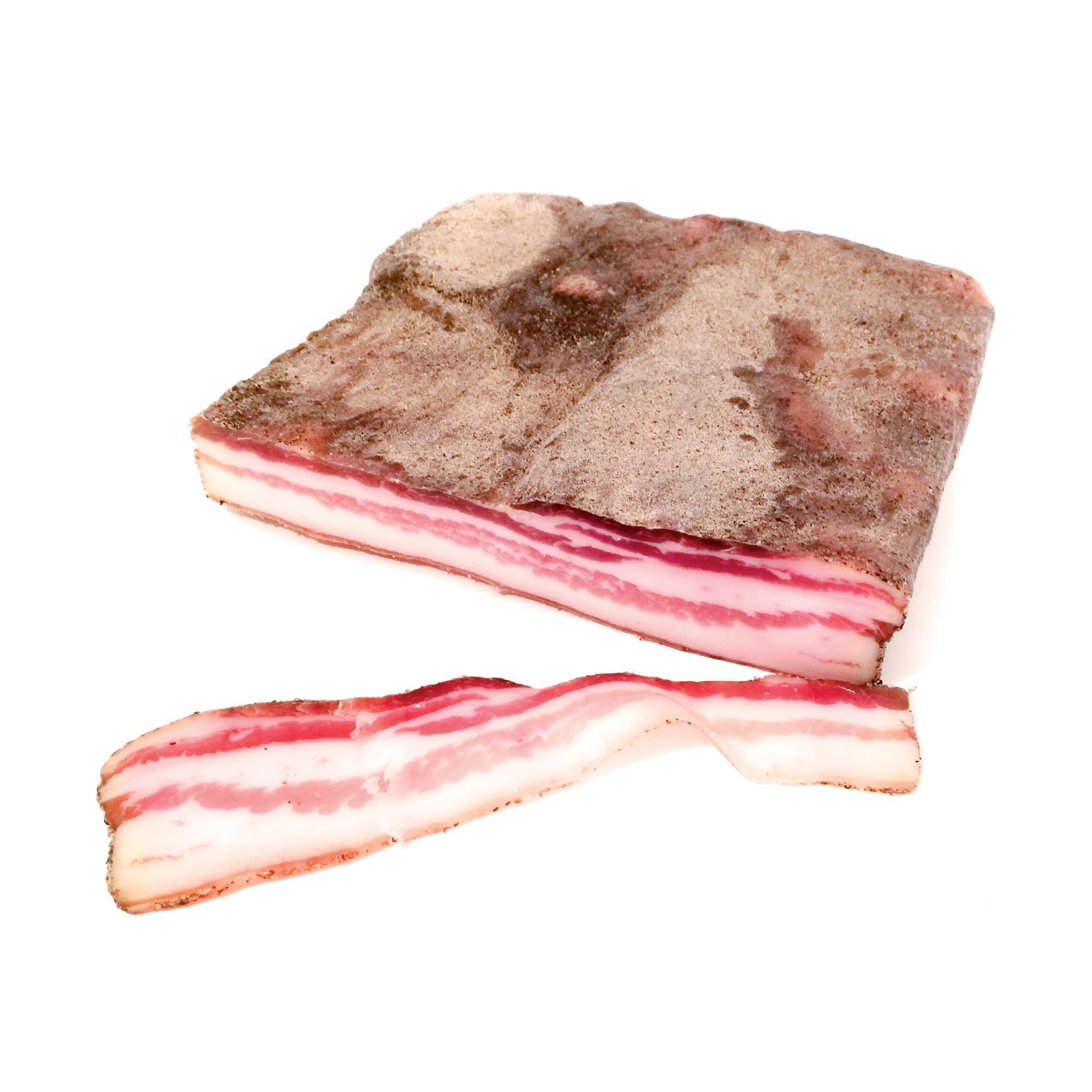
Pancetta is Italian salt cured pork belly and comes in two varieties. Arrotolata is the name for rolled pancetta and is typically eaten as sliced cold-cuts - part of an antipasti. Stesa is the flat variety and is typically used to add depth of flavour in other dishes. Pancetta is not normally smoked but if it is, it will be called pancetta affumicata.
So when our recipe calls for:
- 150 g di pancetta di maiale
- 150g pancetta of pork
They are explicitly asking for pancetta of pork, but also implicitly saying this is the flat and smokeless variety.
There are some flavours that we’re sneaking in through the back door here.
Pancetta will be cured in a brine with a mix of spices and aromas. Black pepper and garlic being the most common but this could also extend to rosemary, chilli powder and even juniper.
You will see some of these ingredients sneak into English translations of the dish. If you squint, you can just about compare Italian pancetta with UK streaky bacon cooked with a little crushed garlic and added herbs (although more likely to be basil than rosemary). Some will also suggest sprinkling bolognese with a pinch of chilli flakes.
Real pancetta is hard to come by on our shores. I was once told by an unreliable source that pancetta is graded. The good stuff is saved for the locals, the not so good stuff is exported to the remainder of Italy and what’s left is given to the rest of the world.
Ideally I would like to source some UK produced pancetta, but the stuff I’ve found online is often smoked to appease British tastes. I’m also less confident that some of the subtleties of the brine are translated, so I’ll be paying over the odds for the real deal.
Guidance for the preparation of pancetta is quite prescriptive:
We’re being asked first to create small cubes (or lardons as the French would call them) then following this by finely chopping with a mezzaluna.
Having worked with pork belly before I’m expecting there’s going to be a fair bit of elbow grease required to finely chop the pancetta any further. The mezzaluna wouldn’t be my first weapon of choice, but I’m happy to give this a go after being inspired by Turkish kebab chefs.
In Turkey, real men don’t mince.
Meat is first cut into thinnish slices with a chef’s knife before the intimidating looking zirh blade is see-sawed with both hands to mash the meat into submission.
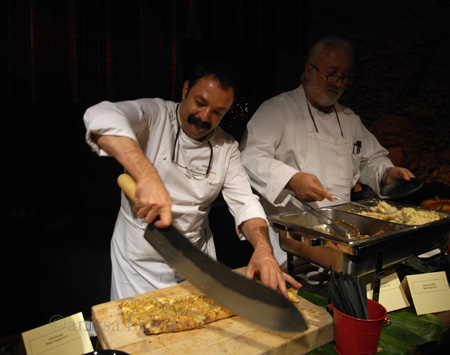
I’ve bought myself a relatively large 26cm single blade mezzaluna, and although the Turks have given me blade (and moustache) envy, I think with this weapon and with the pancetta at room temperature, I may have a fighting chance of steel against bacon.
The recipe makes no mention of oil so we can assume the melting process is slow and involves rendering the fat from the meat. This will result in a slightly caramelised effect as the bacon fat turns to lard. A 20cm pan is called for, presumably this will contain the rendered fat to allow the rest of the meat to cook.
I can get behind this as I would expect a wider frying pan to be light on cooking oil once the lard has dispersed.
Il Soffritto
When making any kind of sauce or stew you can almost guarantee the inclusion of a soffritto.
This is not just the reserve of Italian cooking and is also seen as the standard component of dishes from Spain, France and South America.
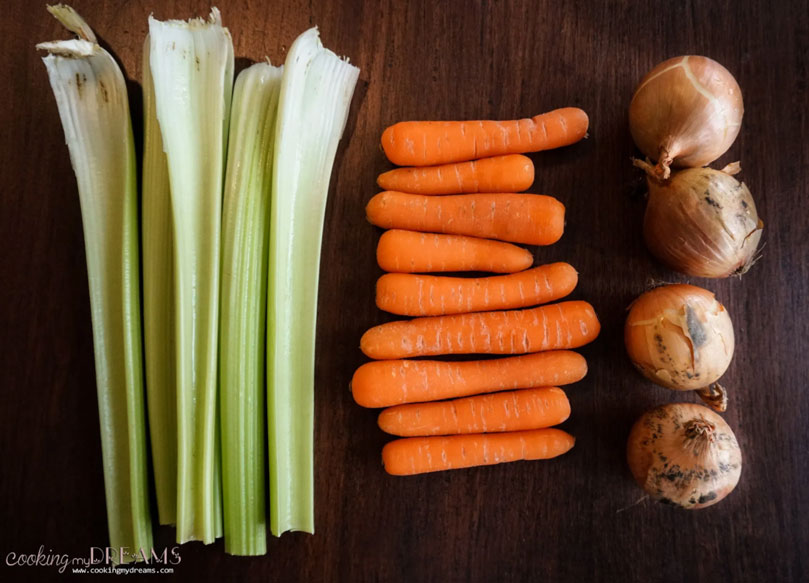
An Italian soffritto is simpler than some. Finely sliced onion, celery and carrots gives you a battuto, slowly cooking this mix in olive oil or butter gives you a soffritto.
Regional variations will sometimes include garlic but l’Accademia opts for the basic interpretation, at least at first sight.
- 50 g di carota gialla
- 50 g di costa di sedano
- 50 g di cipolla
- 50 g of yellow carrot
- 50 g of celery stick
- 50 g of onion
On closer inspection there’s a slight curve ball here. The recipe explicitly calls out the use of yellow carrots.
I’ve looked into the other Emilia-Romagna recipes on l’Accademia’s website and the use of carrot is ever-present but the use of yellow carrots is very limited across their recipes. Yellow carrots are hard to get hold of in UK supermarkets.
Porca miseria!
Once upon a time, orange carrots were a novelty. It is believed wild carrots were first domesticated 3,000 years ago in Afghanistan - presumably a response to snarling, savage wild carrots being too dangerous to share dwellings with humans.
In those early days, Afghans would probably be munching on the purple variety. Thenceforth, mutant carrots were born lacking anthocyanins - the antioxidant flavonoid which makes purple carrots purple. These mutated albinos grew up with yellow roots.
A global army of hobbyist carrot breeders began to mix and match varieties until the 16th century when a beta-carotene rich, orange carrot was thrust on to the world stage.
The Dutch take credit for popularising de oranje wortel, making dubious claims of this being a deliberate breeding program to honour William of Orange and his Royal House.

Whatever the reason, it is the orange root that still continues its 500 year reign as the king of carrots.
So what are l’Accademia playing at here?
It’s anyone’s guess. Yellow carrots will taste slightly sweeter than orange but this would be unrecognisable against the tomato bomb that’s about to come.
It could be about the visuals - yellow carrots will be better at hiding amongst the rest of the soffritto. I’m at a loss, but as I’m taking a dogmatic approach to authenticity, I’ll be using yellow carrots which I’ll be paying through the nose for.
The ingredients list and recipe offers us a choice of either three tablespoons of oil or fifty grams of butter.
To those less familiar with Italian cooking the assumption might be that olive oil has a more natural place in an Italian kitchen, but this is not necessarily the case.
The northern Italian city of Bologna is a land of plenty - full of sheep, pigs, cows and confused cockrells. Dairy is used extensively, and often in contrast to southern Italy where olive oil is favoured.
Given the option it feels like a good opportunity to stick to local produce and so we’ll be using butter.
The butter contributes ¼ of the soffritto by weight, and is added to the already oily rendered lard, which will result in a base to this dish packed with more saturated fat than a doner kebab.
That’s my kind of soffritto!
Don’t overlook the request to ‘gently wilt’ the mixture, these ingredients can never be cooked slow enough.
If the aim is to ‘wilt’, I will typically use a small pot for a soffritto, so that as much of the mix is submerged in the fat as possible. This will result in a poaching of the ingredients.
If we used a wide frying pan there would be more of a dry caramelising effect, which I argue would fall outside the definition of ‘wilted’.
We’ve already been told to use a medium pan for the pancetta but I’m going to monitor the fat content and decide later if I need to transfer the combined ingredients into a narrower smaller pan for that poached, wilted effect.
Also, during the preparation, make sure the soffritto is chopped as finely as your mezzaluna skills allow.
Il Carne
The beef content of our ragù alla bolognese was a complicated component to fully appreciate. It was certainly worth the required research, however, as I believe this to be the element of the dish that is possibly the most misunderstood and also has the potential to be the biggest delighter.
For what is essentially a meat dish it is important that we get this right, so lean in and absorb the evidence.
The ingredients call for the following:
- 300 g di polpa di manzo (cartella o pancia o fesone di spalla o fusello) macinata grossa
- 300 grams of beef mince (…), coarsely ground
The instructions are fairly self explanatory but the choice of cut is less so.
Describing butchery in different countries is always a challenge. Relating US to UK butchery is hard enough, but when you look across languages and add regional variations things get even harder to pin down.
None of the cuts listed are considered “prime” and with these less favoured cow portions there isn’t always a one-to-one relationship between Italian and English butchery.
The list below is my interpretation of which parts of the cow have offered themselves to the classic bolognese and accuracy is not 100% guaranteed. I’ve listed them in order of how interesting I believe they will be, from least to most.
Fesone di spalla
I’ve seen this described as “arm clod”, “blade bolar” and “bolar of blade”. The French equivalent “boule de macreuse” suggests this is from the tricep area of the cow and extends from the middle of the shoulder to the top of the leg and would incorporate the English cuts of chuck, leg and some brisket.
This is probably not a million miles away from shop-bought mince, as cheap cuts are combined with a target fat content in mind, rather than guaranteeing a specific area of the cow.
I’d say that any other English language recipe for bolognese probably leads you down this path when they gloss over the details and translate the original to “beef mince”.
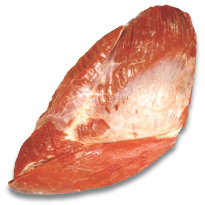
Fusello
The literal translation here is “spindle” which helps to determine what this cut should look like. It’s easier to describe with respect to US butchery where the spindle is taken from “chuck shoulder clod”, which describes a few sub-prime - yet tasty cuts:
- “Shoulder Clod Arm Roast” (which I believe forms part of the “fesone di spalla”) can be cut down further into “Arm Chuck Roast”, “Arm Chuck Steak” and “Ranch Steak”.
- “Shoulder Petite Tender” a cut similar to “Tenderloin”, but smaller and cheaper.
- “Top Blade” which can be plated as “Flat Iron Steak”
These are cowboy cuts - bordering on the challenging side for those whose canines have grown soft from over exposure to a balanced diet.
It’s the “Shoulder Petite Tender” we would substitute for “fusello”.
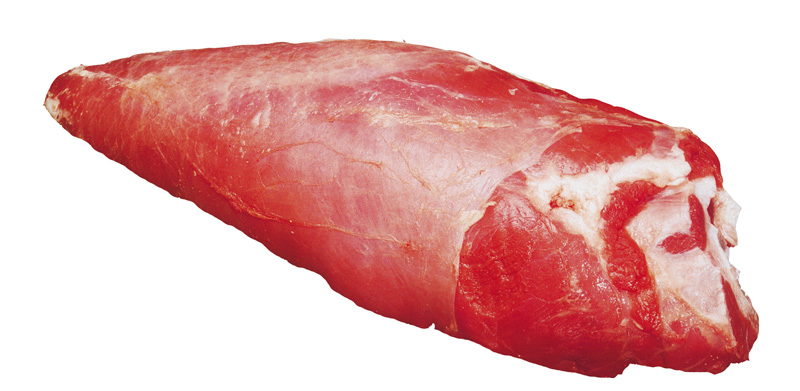
Pancia
Pancia, or “Belly” is a pretty big area of the cow. In the UK we would call this flank but by my reckoning the upcoming “cartella” is a more descriptive component of the same area.
For this reason I’m reading pancia to mean any part of the cow in the belly area except those which could be classified as cartella.
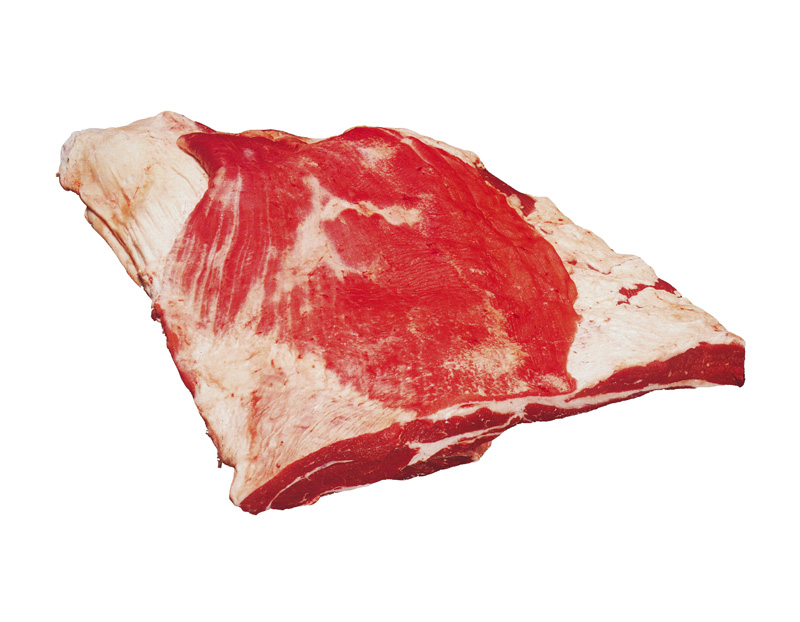
Cartella
Yet another vagary of the official bolognese recipe, cartella is one option that demands we explore further options.
A regional cut of Bolognese butchery is the "finta cartella", which could span from the English flank to thick skirt.
In the UK these cuts are actually less likely to be known by their English names and most outlets will package them by their French names, bavette and onglet. There’s a good reason for this.
The average French carnivore will prize these cuts for their flavour but they are often overlooked on our side of the English Channel. In the UK they’re sometimes referred to as “the butcher’s cut”, implying that the British butcher will knowingly keep the best bits for himself.
Bavette is thin and is typically flash fried, medium-rare in French bistros, offered up with fries and lathered in one of the classics, like a bernaise sauce. The beef has an almost crumbly texture and should be sliced against the grain to save our teeth from the “chewiness” that comes from the areas of the cow that need to work a little harder during the cow’s life. It’s rich and has a strong taste of beef (if it’s possible to make such a statement about beef).
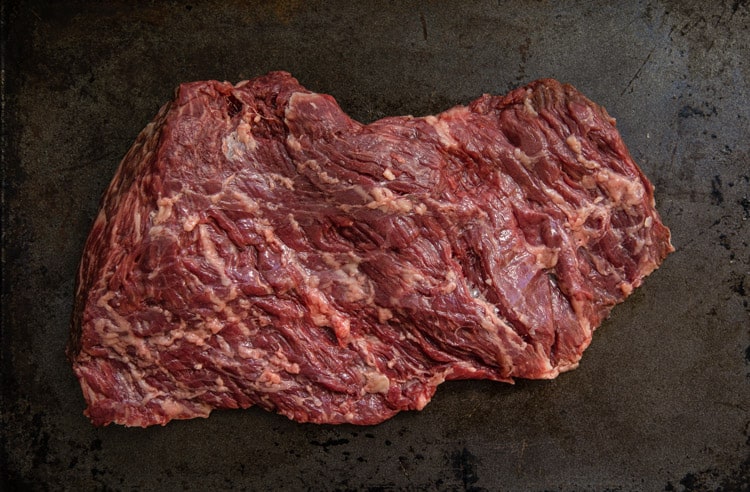
Bavette can be bought packaged in some UK supermarkets. It’s the not-so-secret, secret cut of meat that is far less overlooked than it once was. Onglet, though, is starting to get into the “one for the purists” territory for the average UK sucker-for-sirloin.
Most likely you will need to see a real butcher for this cut. Onglet is like bavette but with the volume turned up. Stronger in flavour - almost offaly - and delicious.
So if we have to make a choice, I would be mincing the onglet for this bolognese. However, there’s yet more to this story.
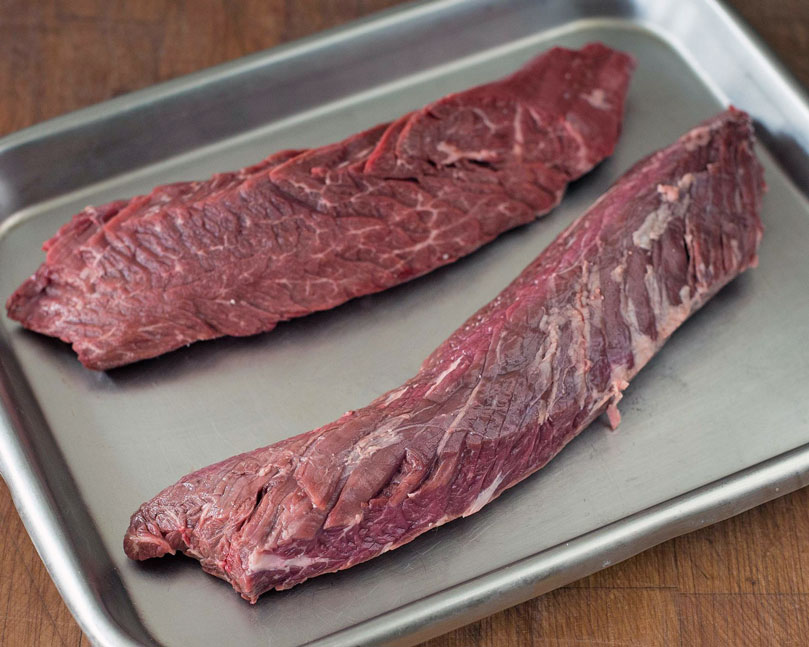
Outside of Bologna “cartella di manzo" refers to an even lesser known morsel of meat. The outside skirt, or thin skirt, is a cut you’ll struggle to find in the UK and one that, perhaps, we’re just not ready for.
In 1988, US trade negotiators produced the Pulitzer prize winning page-turner “US-Japan Beef and Citrus agreement”, which reclassified outside skirt as offal - putting it on a par with other cuts of cow destined for dog food. Outside Skirt is carved from the cow’s diaphragm and is a busy piece of flesh throughout the cow’s life. The reclassification resulted in the normal 200% Japanese tariff on US beef imports being slashed to zilch, meaning that the Japanese beef lovers could gorge on outside skirt at bargain basement prices.
The Japanese couldn’t get enough, and gradually snapped up 90% of the US production for this obscure cut.
90% is an insane volume of anything coming out of the United States, particularly given US cattle producers sit at number one globally, producing about 20% of the world’s beef.
In Japan outside skirt is known as harami and is usually prepared on a yakiniku barbecue. The meat has a very strong flavour and will have the shit marinaded out of it with equally strong flavours of soy and miso, before being well charred on the outside over a high heat.
The Japanese know what they like, and they like it extra marbled. When the meat has more fat marbling it’s known as jo-harami which roughly translates as “the really good shit”.
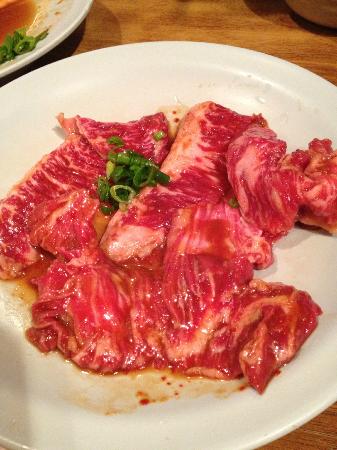
Could harami be the secret to the perfect bolognese?
Having never experienced this taste I’m willing to take the chance.
Finding a full cut of outside skirt proved to be a challenge. I spoke to a couple of local butchers. One stared at me blankly, the other tried to convince me bavette and outside skirt are “basically the same thing, mate”.
One area of promise was “goose skirt”, which gives a butcher a bit more to aim at.
Goose skirt has a place in UK cuisine as the preferred meat filling for Cornish pasties. It’s definitely from the same area as cartello di manzo, but I understand it to be similar to bavette which has become a vague abstraction over that area of a cow (“basically the same thing, mate”).
Being on first name terms with a proper butcher may help clear up the confusion. However, I was more comfortable with harami being the direct match and was able to source some from a specialist Japanese meat distributor.
We’re offered 500g of UK harami for £15 plus delivery, or can push the boat out and get the same quantity of US harami for double the price.
I’ve opted for the UK stuff. I can only assume the US meat is part of the 90% that has been on a slow boat to Japan which must have been followed by a return leg to UK ports. It feels like the additional £15 per half kilo might already have been spent on this cow’s East Asian gap year.
The recipe calls for a coarsely ground mince, which is great, as I excel at coarse. In a similar vein to the pancetta, I’ll be mincing with my mezzaluna and channeling the moustachioed Turk and his oversized forearms.
Il Sugo
The sauce (or gravy) is really where our modern understanding of bolognese is realised. There are several components which we’ll break down in an attempt to stay as true to the 1982 recipe as possible.
Our sauce is a slow build, starting with the pancetta, adding the soffritto and then incorporating the minced beef.
This is going to leave us with a dry and oily mix. The resulting base will be rich and gluggy as the meats offer up their fats and combine with the butter from the soffritto.
Next comes the wine.
- ½ bicchiere di vino rosso
- ½ glass of red wine
The Emilia-Romagna region is a fertile and productive wine region of Italy. There’s no shortage of wines we could select for this sauce. The recipe calls for red, which is no problem as reds and whites are produced in equal measures.
Bolognese would be better classed as comfort food than fine dining, so I don’t see any need to go crazy on the wine selection. It’s likely that the meal is normally prepared with whatever wine is lying around. I do subscribe to the notion that you shouldn’t cook with a wine you wouldn’t be prepared to drink. As I’m adding wine to a sauce it’s normally on the basis of one pour for you, two pours for me.
Bologna is probably most famous for Pignoletto, which I decide against given that it’s a sparkling white, similar to Prosecco. The Emilia-Romagna region is best known for the Lambrusco vine but I won’t be using a sparkling red either.
I believe it more appropriate to look at the more tannic grape varieties from across the region. Barbera and Sangiovese both make for high acidity, medium-to-high tannic wines which should provide a good balance for the rich meat. Sangiovese, being the easier to find with UK stockists, is my pick and I will be cooking with the modestly priced and equally modestly rated Di Cavallo Sangiovese, which will also be served alongside the dish.
Anything more extravagant and it appears I’d be buying from specialists by the crate.

The purpose of the wine is laid bare, this is not about making our glorious mulch more saucy, it’s about dialing up the flavour. “Completely evaporated” shouldn’t be taken too literally here, but we need to get close.
The way I decide if a wine has evaporated enough is to part waves of the sauce with a wooden spoon. If it takes longer than one second for the space you made to be filled back in with liquid, you’re probably at the ideal viscosity.
It’s now time to turn this into a sauce.
Another choice to make, this time with the tomatoes.
Throughout this recipe the first option appears to be the crowd favourite.
We followed the crowd with our meat selection and were rewarded. We went against the crowd with our choice of butter for soffritto fat and felt smugly regional. This time the choice is not so clear cut.
Before we make a decision it’s important we understand what is on offer.
Peeled tomatoes are fairly obviously tomatoes with their skins peeled off. The reason the skin is removed is down to taste and texture. Tomato skin is relatively bitter and hard to break down mechanically, so we remove this from the tomato to avoid visible specks of less appetising bits of the tomato.
Passata takes the processing one step further, with not only the skins removed but also the seeds, before the flesh is passed through a fine sieve. The resultant essence will be richer and more tomatoey. Manufacturers are likely to add a little something extra to the mix, like a touch of salt or our old favourite citric acid.
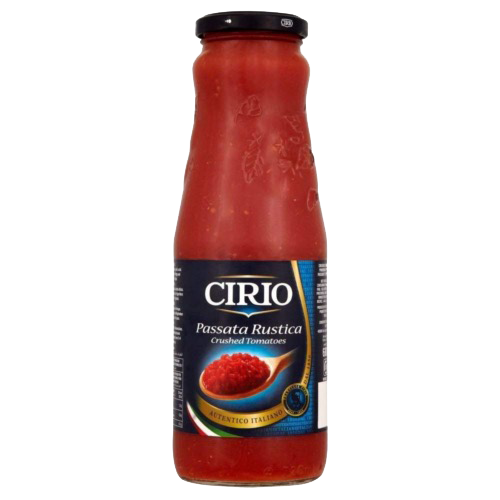
Old habits die hard, and offered the choice between a heavily processed ingredient - with a healthy dose of added food science, or something fresh that needs to be prepared, I’ll take the former.
I’ve also had enough bad experiences with UK tomatoes in my time. Our smaller cherry varieties can be excellent, but the bigger they get, the less edible they become. I know this is not the case in the Mediterranean and I expect a jar of imported passata will taste fuller than our “fresh”, locally grown tomatoes.
Although l’Accademia is happy to dictate the exact dimensions of our terracotta pot, they give us free rein on the quantity of broth and also trust us to prepare it in the correct way.
Such nonchalance suggests it’s not a key component of the dish and we should perhaps not overthink its construction, but if you’ve made it this far you can probably tell overthinking is the very essence of this escapade.
We could begin by debating the difference between a broth and a stock but would more than likely be heading for a “lost in translation” moment. More important is to understand what brodo means to Bologna.
Searching through the recipes on the l’Accademia website for “brodo” reveals another local specialty, cappelletti in brodo which gives us familiarly unclear instructions to its preparation.
Cappelletti is a meat stuffed pasta, which I’m sure is spectacular, but is not our focus for now.
Which comes off the back of the ingredients:
Per il brodo:
- gallina (o cappone), manzo coda di vitello
- 1 costa di sedano
- 1 carota,
- 1 cipolla
- sale
For the broth:
- hen (or cappone), beef[,] pork
- 1 celery stalk
- 1 carrot,
- 1 onion
- salt
The first thing worth pointing out is the seemingly ordinary carrot used in the broth. A refreshing return to normality!
As we should now recognise, the carrot forms the base of the soffritto but we are left to guess how this is combined with the meat as the recipe offers no guidance.
The choice of meat is equally vague but what really catches the eye is the cappone.
Cappone is a castrated cockerel and, like a modern day millennial youth, he grows up not knowing if he’s Arthur or Martha. Similar to his human equivalent, the cappone has succulent, large and fatty breasts. This results in an enhanced flavour of emo broth.
However, if you do some more digging, it turns out broth from this androgynous eunuch is reserved for special occasions, like Christmas.
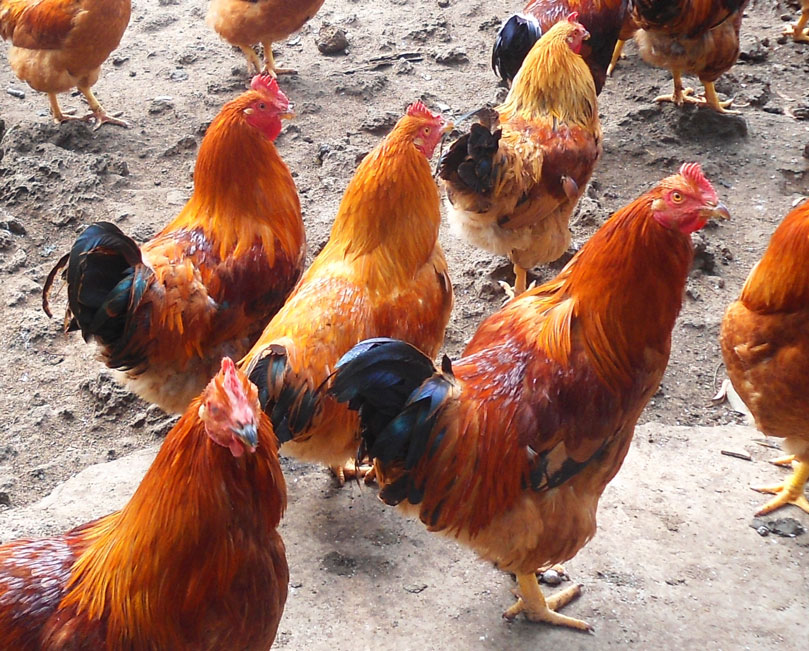
Having tracked down the yellow carrot, unsmoked pancetta and beef harami, I’m happy I don’t have to invite the ghost of this castrated cockerel into my kitchen, clucking
“did you just assume my gender?"
Besides, cappone is basically impossible to find in the UK. Chemical castration is illegal and mechanical castration is likely a lost art, or one our farmers cannot see the benefit of performing. If you manage to find cappone in Britain, it’s likely to be nothing more than a fat, old hen.
So, we shall keep our broth “simple”. Beyond l’Accademia’s interpretation we can find additional details. Beef short rib is suggested. A full chicken leg, skin intact. Pork ribs. And no need to cook the meat separately. I find further clues that suggest the preparation of the soffritto in brodo can be as slapdash as l’Accademia’s recipe notes.
Remove the outside of the onion and smash what remains. Snap the celery and roughly chop the carrot. Throw the vegetables into simmering water with all the meat and let ingredients percolate for a couple of hours.
It’s through the broth that we may also introduce some of the fringe ingredients of the bolognese.
Nutmeg is the most interesting, and a regular addition to brodo in Bologna. Nutmeg is often recommended for English language interpretations of bolognese and it’s another backdoor ingredient I feel should play a small part in the final dish.
Once we have our broth we’re told to add it to the two hour slow stew “when necessary”. The recipe requests we keep the lid on this concoction, so you can’t expect “necessary” to be too often given very little will evaporate.
To me this also requires a word of caution - a slow stew with the lid on is going to require an exceptionally low heat or plenty of stirring. I may normally recommend the use of an electric slow cooker, but sticking to the authenticity of this 1982 recipe we will need to make do with gas on pan.
Into the final furlong.
Is in reference to:
- 1 bicchiere di latte intero
- 1 glass of whole milk
This request is baffling to the homegrown Dolmio Ultras.
I first heard adding milk to a bolognese was a thing years after my spag bol journey had begun. It sounded like another of those bizarre ingredients dreamt up by perverts who gave us the Thai red curry bolognese.
YOU CANNOT OVERLOOK THE IMPORTANCE OF THIS INGREDIENT!
Without a glass of whole milk you’ve basically prepared the sister dish Ragù alla Romagnola or worse still Ragù Napoletano. It would be such an epic fail to be so faithful to this recipe and to allow the milk to trip you up just short of the finish line.
The recipe calls for a full glass of whole milk, which in context to the half glass of wine is probably between 200ml and 250ml. We are also asked to add this towards the end of the cooking. This makes sense, we wouldn’t want to curdle the milk over a 2 hour stew, so I would interpret this as turning the heat off and adding the milk, ensuring that the resultant mix is still warm (which is likely given the quantity of warm sauce to cold milk).
Our last instruction is to season with salt and pepper. We should probably have checked the salination long before this last step, but it is no doubt important to get this right before serving. The pancetta is salty and possibly so too is the brodo, depending on how it was prepared, but don’t fear additional salt if your tastebuds demand it.
Tagliatelle
Finally.
We’ve been tiptoeing around the elephant in the room all this time. Bologna had never considered our crappy Dolmio sugo to be the biggest travesty. The real pain and misery was always caused by our choice of pasta.
It has always been, and will always be, the use of spaghetti which the Bolognans consider an affront to their regional customs.
To understand why is to understand Italian pasta dishes.
The combination of sauce and pasta is supposed to be a happy marriage between equals. The pasta complements the sauce and the sauce complements the pasta. Mixing spaghetti - which is more often consumed in the south - with ragù alla bolognese is like taking a devout christian couple to a swingers party.
In the eyes of most Italians there are some unions which are not supposed to be disturbed. If we continue to flog this metaphor, there can be affairs between married couples. Pappardelle, macaroni and even lasagne have shared a bed with our ragù, but these gumar represent nothing more than brief flirtations. It’s tagliatelle al ragù alla bolognese that the locals want to see at the altar.
In some ways it seems that l’Accademia jealously guarded the tagliatelle recipe more than they did ragù alla bolognese. Tagliatelle was made a hall of famer on April 16th 1972, a decade ahead of the sauce that typically decorates it.
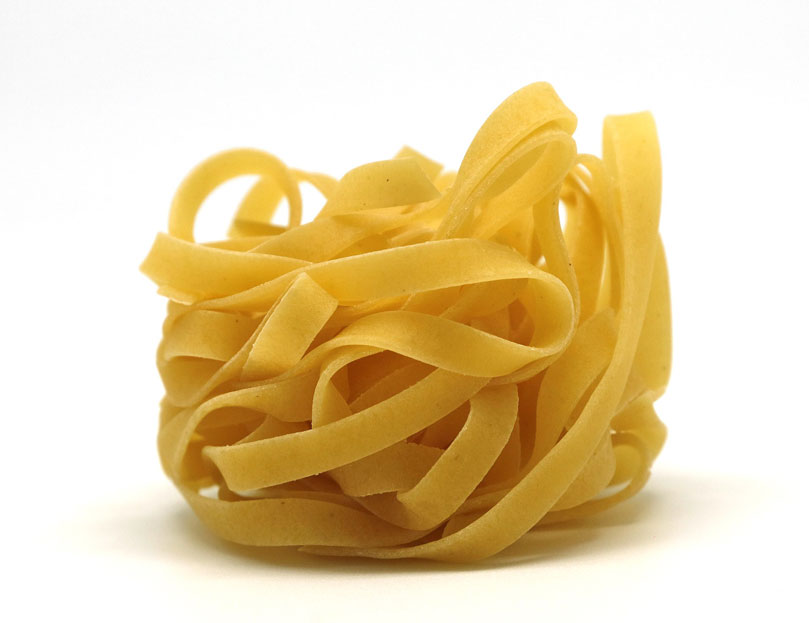
Proving that the guys at l’Accademia really were fun at parties, they enlisted the help of their friends at “Camera di Commercio Industria Artigianato e Agricoltura di Bologna” (“Bologna Chamber of Commerce”) as a form of crowd control. La Camera had a golden strand of tagliatella created with the exact dimensions considered to be acceptable for this noodle.
The specification calls for a noodle 1mm thick and 8mm wide cooked (or 7mm wide uncooked) which rather arbitrarily is equated to exactly 1/12,270th the height of the Asinelli Tower in Bologna (it’s not clear if the tower also needs to be cooked for this comparison to hold true, maybe one to follow up with the La Camera).
My own theory is that one of the old Italian pedants at l’Accademia finally had the stick up his arse surgically removed and it just happened to be shaped like a string of pasta. The stick was sprayed with gold paint, anointed by the Pope and the rest is history.
I’ve emailed l’Accademia to confirm this theory but have so far received no response.
La Camera also provides us with the ingredients for the official tagliatelle:
“Tipo 00” is flour specifically designed for pizza and pasta, which is milled to be very fine and is available in some UK supermarkets. 4 whole eggs makes this proper egg dough pasta. Adding salt to the pasta dough is actually a slightly controversial request.
During our spag bol experience, we heard about the lengths some chefs will go to in order to adequately season their pasta, by cooking in extremely salty water. The more observant of you might ask why they don’t just add the salt to the pasta dough. You can read a lot of opinions out there which often fall back to uncited scientific reasoning - salt will apparently strengthen the gluten networks that develop through the pasta kneading process and makes the pasta more elastic.
We could try searching for this evidence in scientific papers. I think though, with a 2,000 year tradition of pasta making, there is perhaps no need to nitpick over the hard science and instead trust in the anecdotal evidence. L’Accademia are possibly suggesting that the perfect tagliatelle needs to be a bit more springy than other pastas.
I’ve always considered homemade breads and pastas to be one of the first true tests of a home chef’s grit. There is no doubt that making your own will taste better than the shop bought stuff but there is a mental barrier that needs to be crossed in order to accept the additional effort is worthwhile. Now that we’re at the end of our second bolognese recipe, it is time to cross that barrier, so please ensure you go the extra half-mile and make your own pasta. You will be richly rewarded.
Making tagliatelle at home is pretty straight forward with the right equipment. I’ll be using the Marcato Atlas pasta machine which has served me well over the years.
Be sure to measure your tagliatelle strands. If they are not a uniform 7mm wide when dry and do not expand to 8mm wide and 1mm deep when cooked, then you are a failure and an embarrassment to your family. Throw all your food preparation in the bin. Take what is left of the Sangiovese, a long straw and find a table for one facing a wall. Have a long hard think about how your life went so wrong.
Il Tocco Finale
Mary Berry, the decrepit prime-time gluten peddler (and British national treasure), shocked the nation when she suggested adding cream to her slow cooked bolognese. The country’s press assumed she’d lost her final marble in that morning’s meringue mix. Time to get those power of attorney letters signed and ask the retirement village to prepare a straight jacket for extra narrow shoulders.

However, l’Accademia have their sleeper cells all over the world, ready to be called upon at the sniff of Italian food culture being misrepresented. Many leapt to Mary’s defense, explaining that tomatoes, meat and cream were as natural a mix as il tricolore of the Italian flag. Let’s examine this further.
The recipe calls for:
That word “optional”, may just have saved poor Mary from Tuesday night bingo at Shady Oaks. And if we read on:
She’s just about made it! Mary had added her double cream far too early but we can release her back into her Buckinghamshire estate with a stern warning and a light tasering. As Mary was using dry pasta it was totally legitimate to add cream.
This is an odd one. I’m not sure that cream is the ingredient to bridge the gap between dry tagliatelle and fresh. Fresh noodles can have a certain “slipperiness” to them which you could argue is similar to the experience of “creaminess”. I would also say that if we are considering “fresh” pasta is just the other end of the scale to “dry” pasta, then what are we to do with partially dried fresh pasta?
Either way, I’m going to be making my pasta fresh and can opt out of this requirement.
So we’ve perfectly described all the subtleties of l’Accademia’s recipe for tagliatelle al ragù alla bolognese.
If we are able to perform in the kitchen with no slip ups, we should be feeling pretty good about ourselves. There are, though, just a couple more things to point out which didn’t make it into the recipe notes.
First, remember how seriously the Italians take the union of pasta and sauce.
When we made spag bol we created a spaghetti crater and filled it with sauce. This is nonsense. No Italian would ever present a pasta dish in this way. The pasta and the sauce should be mixed before serving, it’s not a task that should be pushed back to the diner.
Second, the cheese. Implicit in this creation is to top our final dish with cheese, and it can only be parmesan.
This Italian hard cheese is protected by EU law. In the same way that sparkling white wine can’t be called champagne if it wasn’t produced in the Champagne region of France, parmesan will only get the name if it is produced in a specific region of northern Italy, which spans the provinces of Parma, Regio Emilia, Modena and parts of Bologna and Mantua.
The majority of UK shop bought parmesan is softer than you would find in Italy. Like a monkey with a brass banana, proper parmesan confuses British punters, owing to its hardness conflicting with the design of the nation’s cheese graters.
Rather than encouraging the country to buy graters designed for hard cheese, parmesan producers seem happy to export a much younger, softer variant to us Western European cheddar munching heathens who know no better. I’ll be buying the best (most mature) of what is available on these shores without bringing in another expensive specialist supplier.
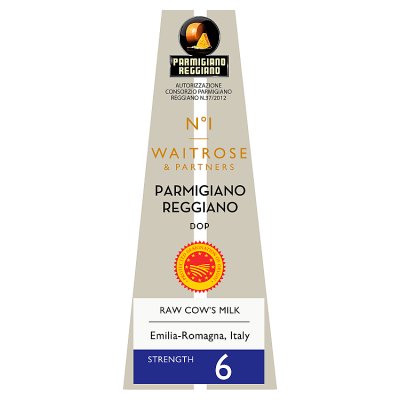
And the final warning - this is not the International Cheese Eating World Cup Final! Sprinkle the parmesan over the finished dish with the modesty of a northern Italian nun. You’ve moved on from your spag bol days!
Buon Appetito!

